The Role of Continuous Learning in Alleviating Job Stress
Discover the role of continuous learning in alleviating job stress. Learn how ongoing professional development can boost resilience, reduce burnout, and enhance workplace well-being, leading to a more confident and empowered workforce.
12/9/20246 min read
In today's fast-paced work environment, the role of continuous learning in alleviating job stress is crucial.
Employees face challenges such as unrealistic deadlines, micromanagement stress, and the psychological effects of being overworked and underappreciated, leading to burnout and dissatisfaction.
Continuous learning provides tools to adapt, bridging the link between workplace stress, wellbeing factors at work, and employee retention while fostering resilience.
Simple strategies, like adopting daily habits to lower stress at work further alleviate pressure.
By addressing the intersection of career development and stress and integrating regular feedback and recognition, learning boosts confidence and well-being. I
Continuous learning is a powerful tool for managing stress, fostering growth, and creating healthier workplaces.
The Role of Continuous Learning in Alleviating Job Stress
The role of continuous learning in alleviating job stress is at the heart of creating workplaces where we feel empowered rather than overwhelmed.
We’ve been there: stress creeps in when expectations seem unclear, or when we feel like we’re lagging behind in a world that’s always moving forward.
By continuously learning, we keep our skills sharp, stay adaptable, and remind ourselves that we’re capable of growing and evolving.
Here’s the truth: when we actively learn, we give ourselves the chance to feel stronger, calmer, and more prepared. Let’s dive into how this works in practice.
Enhancing Competence and Confidence
One of the most significant benefits of continuous learning is the enhancement of competence and confidence. When employees feel confident in their skills, stress is reduced, and job satisfaction increases.
Continuous learning empowers employees to tackle new challenges head-on. As individuals build expertise in new areas, whether through mastering a software tool or learning effective communication techniques, they experience a sense of accomplishment.
This success translates into improved confidence, which helps employees manage stress more effectively.
Research confirms that increased competence reduces anxiety, as employees feel better equipped to handle work demands. This sense of preparedness has a profound impact on job performance, as well as mental well-being.
In the context of a workplace environment that demands high performance, employees who engage in continuous learning report feeling more competent and less stressed.


Building Adaptability to Change
The workplace is in constant flux, from organizational shifts to technological advancements and evolving industry practices.
Continuous learning provides employees with the flexibility and adaptability needed to navigate these changes. By learning new skills, workers can face technological disruptions and shifting job roles with a sense of agency rather than fear.
A significant stressor in the workplace is the fear of the unknown or sudden changes, such as restructuring or new systems being implemented. Continuous learning can alleviate this stress by building an adaptable mindset.
Employees who embrace learning are better equipped to take on unfamiliar tasks, which not only reduces stress but opens doors for further personal and professional growth.
This aligns with findings from studies on hybrid work models, where employees who continuously learn are more capable of adapting to changes, thereby reducing stress and boosting productivity.
Fostering Emotional Resilience
Continuous learning also plays a key role in fostering emotional resilience. When employees engage in learning, particularly in collaborative environments, they strengthen their emotional intelligence and problem-solving capabilities.
This emotional resilience is critical in managing job-related stress, as it enables employees to bounce back from setbacks and challenges.
Learning from peers or mentors creates a sense of community and support, helping individuals feel less isolated in their stress.
As employees grow their emotional resilience, they are better able to handle workplace pressures without succumbing to burnout.
Furthermore, learning new coping mechanisms—such as stress management techniques or time management skills—can improve emotional well-being both inside and outside the workplace.


Reducing Role Ambiguity
Ambiguity in job roles is one of the leading causes of stress. When employees aren’t clear on their responsibilities, it leads to second-guessing and feelings of inadequacy.
Continuous learning offers a solution by providing employees with the knowledge and skills they need to clarify their roles and responsibilities.
By participating in workshops, seeking professional development opportunities, and engaging in one-on-one coaching, employees can gain the clarity they need to thrive in their positions.
This transparency reduces stress and increases productivity, as employees understand what is expected of them and how to meet those expectations.


Key Strategies for Implementing Continuous Learning
To successfully integrate continuous learning into the workplace and harness its benefits in reducing job stress, organizations can adopt several key strategies.
These strategies help create a supportive environment where employees feel empowered to engage in lifelong learning, leading to improved well-being and higher productivity.
1. Provide Structured Learning Opportunities
Structured learning opportunities are essential for ensuring that employees can access learning resources without feeling overwhelmed.
Organizations can offer workshops, online classes, or in-house training sessions that align with employees' roles and career aspirations.
By providing these resources, companies can make learning part of the workday routine, reducing the feeling that learning is an additional task.
This structure allows employees to continuously build skills in a manageable, focused way, which fosters a sense of achievement and reduces stress.


2. Encourage Lifelong Learning Cultures
Creating a culture that values and encourages lifelong learning is one of the most effective ways to foster employee growth. When organizations promote learning as a core value—rather than a one-time event—it becomes ingrained in the daily activities of the workforce.
Sharing personal learning experiences, celebrating milestones, and encouraging curiosity can all help build a community where learning is seen as an ongoing, positive journey.
In this environment, employees feel more motivated and supported in their pursuit of knowledge, reducing stress and improving engagement.
3. Leverage Technology for Accessible Learning
Technology has made it easier than ever to access learning materials, making it a powerful tool for continuous development.
E-learning platforms, virtual webinars, podcasts, and instructional videos offer employees the flexibility to learn at their own pace and convenience.
By leveraging technology, employees can engage in learning opportunities during breaks, after work, or even while commuting.
The ability to learn in short bursts or dive into more extensive learning sessions as needed helps alleviate the stress of fitting learning into an already busy schedule.


4. Offer Recognition and Rewards
Recognizing and rewarding employees for their learning achievements is a crucial strategy for encouraging ongoing development.
Whether it’s through formal certifications, promotions, or simply public acknowledgment of accomplishments, recognition helps motivate employees to continue their learning journeys.
Feeling valued for their efforts boosts morale and reinforces the idea that continuous learning is both important and appreciated. This can help reduce stress by reinforcing a sense of accomplishment and progress.
5. Integrate Learning with Career Development
Linking continuous learning to career advancement ensures that employees see the value in their efforts.
When learning opportunities are aligned with career goals, employees can clearly see how their development contributes to their long-term success.
This connection motivates employees to invest in their personal growth, as it not only helps reduce job stress but also enhances job satisfaction.
Whether it’s acquiring new skills for a leadership role or gaining industry certifications, integrating learning with career development creates a meaningful and rewarding pathway for employees to follow.




Conclusion
The role of continuous learning in alleviating job stress is clear: it empowers employees to feel more competent, adaptable, and resilient. By integrating learning into the fabric of the workplace, organizations can create an environment that fosters growth, reduces stress, and enhances well-being.
Investing in continuous learning doesn’t just make employees more skilled—it makes them more confident, less stressed, and better equipped to handle the pressures of the modern workplace. When employees feel supported in their development, they are more likely to stay engaged, satisfied, and productive.
By committing to continuous learning, both for professional development and personal growth, employees and employers alike can contribute to a healthier, more resilient workplace. This commitment doesn’t just reduce stress; it helps individuals and teams thrive in the face of challenges, making continuous learning an essential tool for building a positive, dynamic work environment. Together, we can create workplaces where growth, resilience, and joy go hand in hand.
References:
Panari, C., Guglielmi, D., Simbula, S. and Depolo, M. (2010), "Can an opportunity to learn at work reduce stress? A revisitation of the job demand‐control model", Journal of Workplace Learning, Vol. 22 No. 3, pp. 166-179.


